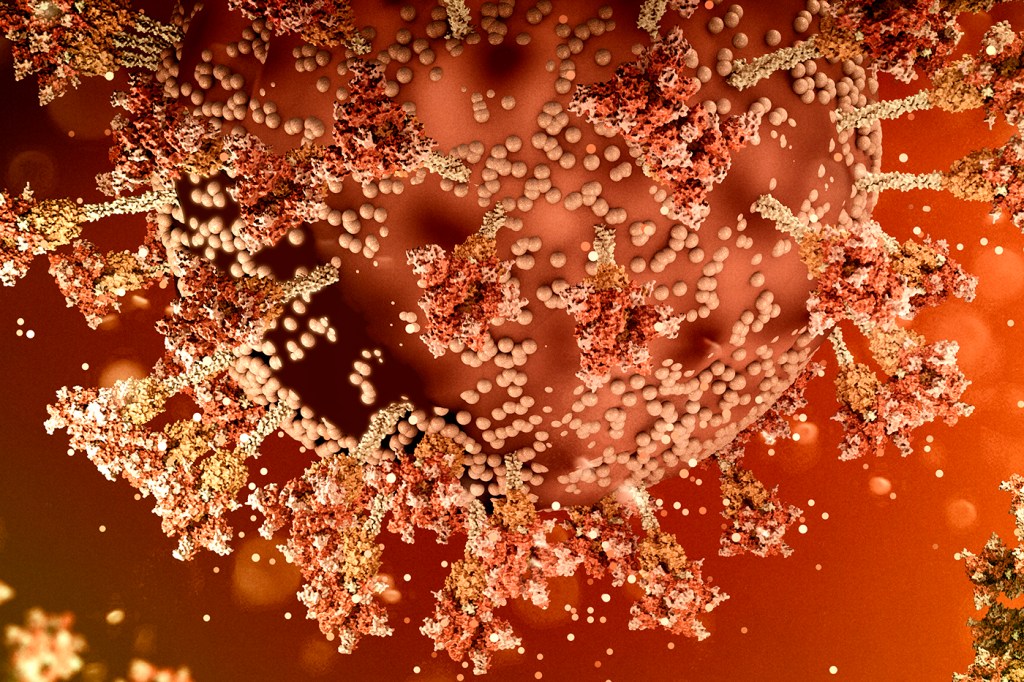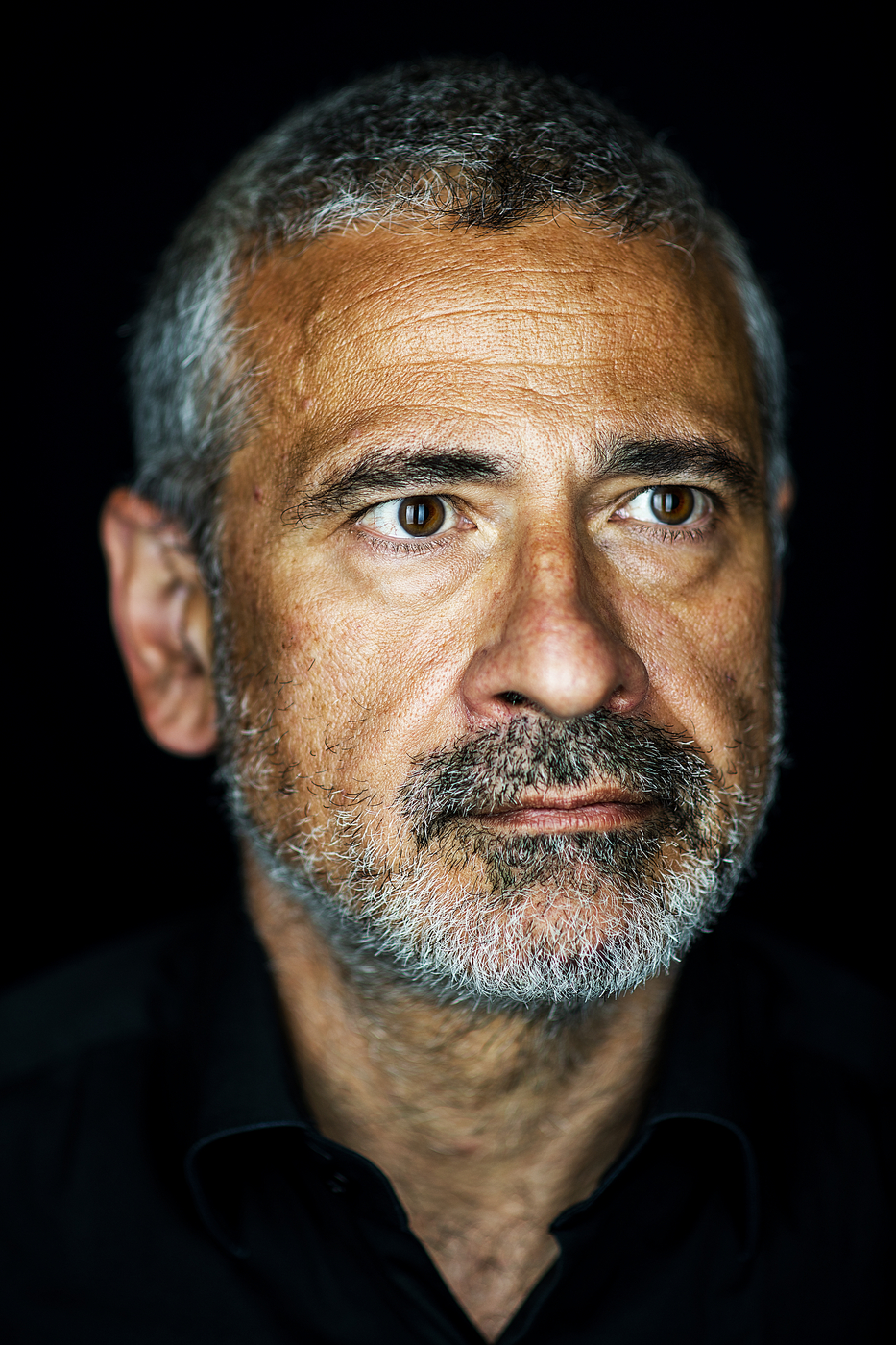Omicron moves fast. Here’s what that means for the next few weeks.

If you think the omicron variant has swept throughout the world at a bewildering pace, that’s because it has.
Cases of this strain of the coronavirus have been doubling at a rate of two to three days—compare that with the roughly two-week doubling time of the Delta variant.
A virus that moves so quickly around the globe could spell disaster just as people are traveling and gathering for holiday and New Year celebrations. But the devil’s in the details when it comes to SARS-CoV-2, the coronavirus that causes the disease COVID-19. And scientists have learned a lot more details about this speedy strain in the two weeks since the World Health Organization labeled omicron as a “variant of concern.”

Alessandro Vespignani, Sternberg Family Distinguished University Professor of physics, computer science, and health sciences, and director of the Network Science Institute at Northeastern. Photo by Matthew Modoono/Northeastern University
“The likelihood of a couple of rough months ahead is increasing, but it’s a mixed bag of news,” says Alessandro Vespignani, who leads a team of infectious disease modelers at Northeastern that has been developing a set of predictive models to project the future of the COVID-19 pandemic since early 2020. “It could be worse, and it could be even better if we get more reassuring news on the side of severity.”
Vespignani, Sternberg Family distinguished university professor of physics, computer science, and health sciences at Northeastern, estimates that with data from another week or two of omicron’s spread, scientists will be able to answer some of the key questions about the variant with more certainty. But they’ve already gotten a few hints about the omicron variant’s ability to spread, whether it can dodge vaccine protections, and its severity.
Severity is perhaps the least-well understood attribute of the omicron variant so far, but there are indications that fewer people infected with the strain end up in the hospital. A study done by South Africa’s largest health insurance company found that the risk of adults who contracted COVID-19 being hospitalized was 29 percent lower than the March 2020 wave of infections.
However, vaccines may have played a role in making omicron seem less severe. Some experts have suggested that the apparent reduction in severity of this strain compared with previous versions of the virus could also be due to the number of people who have some immunity against the virus from previous infection or vaccination at this point in the pandemic.
Perhaps one of the biggest questions swirling around the omicron variant is whether or not people who are vaccinated are still protected from it. The answer seems to be that omicron can dodge vaccine-induced immunity to a previously unseen level. A study conducted in South Africa found that the Pfizer-BioNTech vaccine (which is the vaccine most readily available in that country) provided just 33 percent protection against infection.
But the vaccine could still keep people out of the hospital—and from dying—according to that same study by the South African insurer. They found that the Pfizer-BioNTech vaccine might offer 70 percent protection against hospitalization should a patient be infected with the omicron variant.
Furthermore, initial studies suggest that booster shots make a significant difference. In lab studies and real world studies, researchers have found that people who had been previously infected with COVID-19 and had two shots of the vaccine had a strong immune response against the omicron variant, compared with people who just had two shots of the vaccine. The idea is that these people’s immune systems had been primed twice after their initial exposure, instead of just once from a two-dose vaccine regime. The three-shot approach is designed to emulate that.
“So now what we have to do to slow down the spreading of this variant is to build a wall of boosters and boosted people,” Vespignani says.
Even though vaccines still seem to offer a substantial amount of protection from severe disease, the fact that people vaccinated with two shots can still be infected creates another problem: This highly infectious strain doesn’t encounter the same roadblocks in its spread as, say, the Delta variant.
Consider someone infected with the virus in a classroom of twice-vaccinated peers. With the Delta variant although that infection was “more transmissible, it wasn’t a problem. Delta was finding a wall,” Vespignani says. “Now, probably half of those people are again susceptible to omicron, so [the variant] finds a much easier life.”
This is all occurring, he adds, at a moment when “we are all tired and sick of masks et cetera, and so we are a little bit more relaxed.”
And so the omicron variant is ripping through the world at a striking rate.
With the variant appearing to be less severe, it might be easy to shrug and say, let it rip. But that kind of spread could still lead to a devastating amount of severe cases—and they will likely occur all at once, adding even more strain to the already overburdened hospital systems. After all, even if the percentage of severely ill people goes down, but the raw number of cases goes way up, lots of people still stand to become very ill. A smaller percentage of a much larger population may mean the number of people who are severely ill remains level—or gets even higher.
“In the next few weeks, for sure we will have a surge in cases and the surge in cases will be very rapid and it will challenge our systems,” Vespignani says. “There are concerns about what could happen to the healthcare system. We are already driving the system to the limit with Delta. On top of this, you will have more people that will need healthcare support.”
Vespignani says it’s difficult to outline specifically how high that surge will go until researchers pin down some more precise numbers about the severity of the omicron variant, the protection booster shots offer, and other factors. Those details are expected to become clearer in the next week or two. But he expects that the beginning of 2022 will be largely spent dealing with a wave of omicron cases.
“One thing is apparent for omicron,” Vespignani says. “It is rising so quickly that we hope it will go down at the same pace. So this is something that we will have to deal with in January, February, and then should get into a different stage of the epidemic.”
For media inquiries, please contact Marirose Sartoretto at m.sartoretto@northeastern.edu or 617-373-5718.





